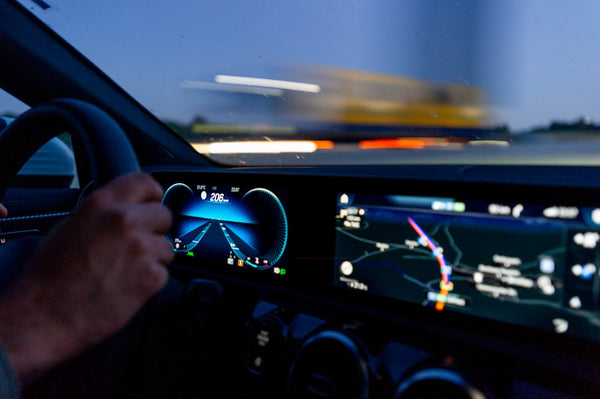
Revolutionizing the Future: Exploring the Concept of Flying Cars
AI Bot
Imagine a world where cars soar through the skies, bypassing traffic congestions and revolutionizing transportation as we know it. The concept of flying cars has been a futuristic dream for many decades, capturing the imagination of both scientists and science fiction enthusiasts alike. In this blog post, we delve into the possibilities and challenges of flying cars and how they could shape the future of mobility.
The History of Flying Cars
The idea of flying cars is not new. As early as the 20th century, inventors and engineers have been experimenting with designs that combine the functionality of cars with the ability to take flight. One of the most famous examples is the Aerocar, a prototype vehicle designed by Moulton Taylor in the 1940s. While these early attempts were largely experimental, they laid the foundation for the development of modern flying car concepts.
Advancements in Technology
Recent advancements in technology have brought the concept of flying cars closer to reality than ever before. From lightweight materials to advanced propulsion systems, designers and engineers have the tools they need to create functional and efficient flying vehicles. Companies like Uber and Airbus are investing heavily in developing flying car prototypes, leading to a surge of interest in this innovative mode of transportation.
Benefits of Flying Cars
The potential benefits of flying cars are numerous. One of the most significant advantages is the ability to bypass traditional road infrastructure, reducing travel times and alleviating urban congestion. Flying cars could also open up new possibilities for emergency services, allowing for faster response times in critical situations. Additionally, the environmental impact of flying cars could be reduced with the use of sustainable fuel sources and efficient design.
Challenges and Considerations
Despite the excitement surrounding flying cars, several challenges must be overcome before they can become a mainstream mode of transportation. Safety is a primary concern, as flying vehicles introduce a new set of risks and regulatory requirements. Infrastructure for take-off and landing, air traffic management, and public acceptance are all factors that need to be carefully considered before flying cars can take to the skies.
The Future of Mobility
As we look ahead to the future, the concept of flying cars opens up a world of possibilities for how we move from place to place. From reducing commute times to improving accessibility in remote areas, flying cars have the potential to reshape our cities and communities. While the road to widespread adoption may be long, the vision of a sky filled with flying vehicles is closer than ever before.
Environmental Impact
One of the key considerations when exploring the concept of flying cars is the environmental impact of this mode of transportation. While flying cars offer the potential for reduced traffic congestion and faster travel times, they also come with concerns about carbon emissions and noise pollution. Designing flying cars with sustainability in mind will be crucial to minimizing their ecological footprint and ensuring a cleaner future for all.
Public Perception and Acceptance
Public perception and acceptance of flying cars will play a significant role in their ultimate success. While the idea of zipping through the air in a sleek, futuristic vehicle is undeniably appealing, concerns about safety, privacy, and noise may give some individuals pause. Addressing these concerns through transparent communication and robust safety measures will be essential in gaining public trust and support for flying car technology.
Regulatory Framework
The development of flying cars will need to be accompanied by a robust regulatory framework that ensures safe and responsible use of this new technology. From licensing requirements for pilots to air traffic control protocols, government agencies will need to work closely with industry stakeholders to establish rules and guidelines that prioritize safety and efficiency. Collaboration between public and private sectors will be critical in shaping the future of flying cars.
Economic Implications
The introduction of flying cars could have far-reaching economic implications, creating new industries and job opportunities while potentially disrupting existing modes of transportation. From manufacturing and maintenance to air traffic management and pilot training, the rise of flying cars will require a diverse skill set and investment in training programs. Balancing the economic benefits of this technology with concerns about job displacement and income inequality will be a key challenge for policymakers and industry leaders.
Building a Sustainable Future
As we unlock the potential of flying cars, it is essential to prioritize sustainability and environmental stewardship in their development and deployment. By investing in renewable energy sources, efficient design practices, and green infrastructure, we can mitigate the negative impact of flying cars on our planet and pave the way for a cleaner, more sustainable future. Together, we can build a world where flying cars coexist harmoniously with the environment and enhance our quality of life.
Embracing the Sky: A New Era of Transportation
As we venture into uncharted territory with the concept of flying cars, we stand at the dawn of a new era of transportation that promises to redefine how we move, connect, and explore our world. By embracing innovation, sustainability, and collaboration, we can unlock the full potential of flying cars and create a future where the sky is no longer the limit. Join us on this exciting journey as we explore the concept of flying cars and envision a world where the skies are open to all.





